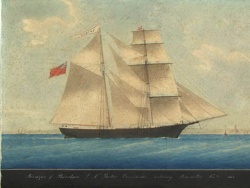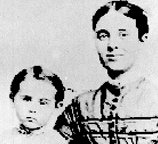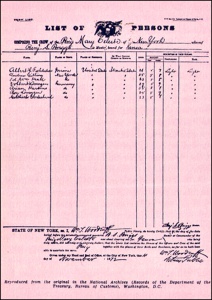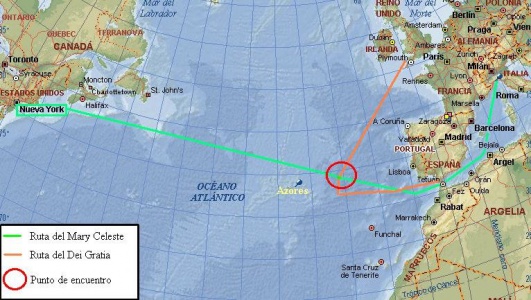Mary Celeste

Mary Celeste was an American merchant brigantine that was found adrift and deserted in the Atlantic Ocean, off the Azores Islands, Portugal, on 4 december 1872, by the Canadian brigantine Dei Gratia. She was in a disheveled but seaworthy condition, under partial sail, with no one on board, and her lifeboat missing. The last log entry was dated ten days earlier (25 november). She had left New York for Genoa on 7 november, and on discovery was still amply provisioned. Her cargo of denatured alcohol was intact, and the captain's and crew's personal belongings were undisturbed. None of those who had been on board — the captain, Benjamin Briggs, and his wife, their two-year-old daughter, and the crew of seven — were ever seen or heard from again.
Conan Doyle influence
In january 1884, Arthur Conan Doyle published anonymously in The Cornhill Magazine a short story based on the mystery which was titled J. Habakuk Jephson's Statement. In his fiction, he spelled the vessel's name as Marie Celeste. The narrative was so strong that the readers thought it was a report of a real event. This spelling has now become more common than the original in everyday use.
In the Sherlock Holmes stories
In the story The Adventure of the Sussex Vampire, Holmes said to Watson:
« Matilda Briggs was not the name of a young woman, Watson, said Holmes in a reminiscent voice. It was a ship which is associated with the giant rat of Sumatra, a story for which the world is not yet prepared. »
Sophia-Matilda Briggs was the daughter of Benjamin Briggs, captain of the Mary Celeste.
Photos
-
Benjamin Briggs, captain of the Mary Celeste
-
Sarah Elizabeth Cobb, his wife, and their son
-
List of the Mary Celeste's crew
-
Lieutenant Deveau
-
Captain Morehouse of the Dei Gratia
-
Albert C. Richardson, first mate of the Dei Gratia
-
Route of the Mary Celeste and Dei Gratia






